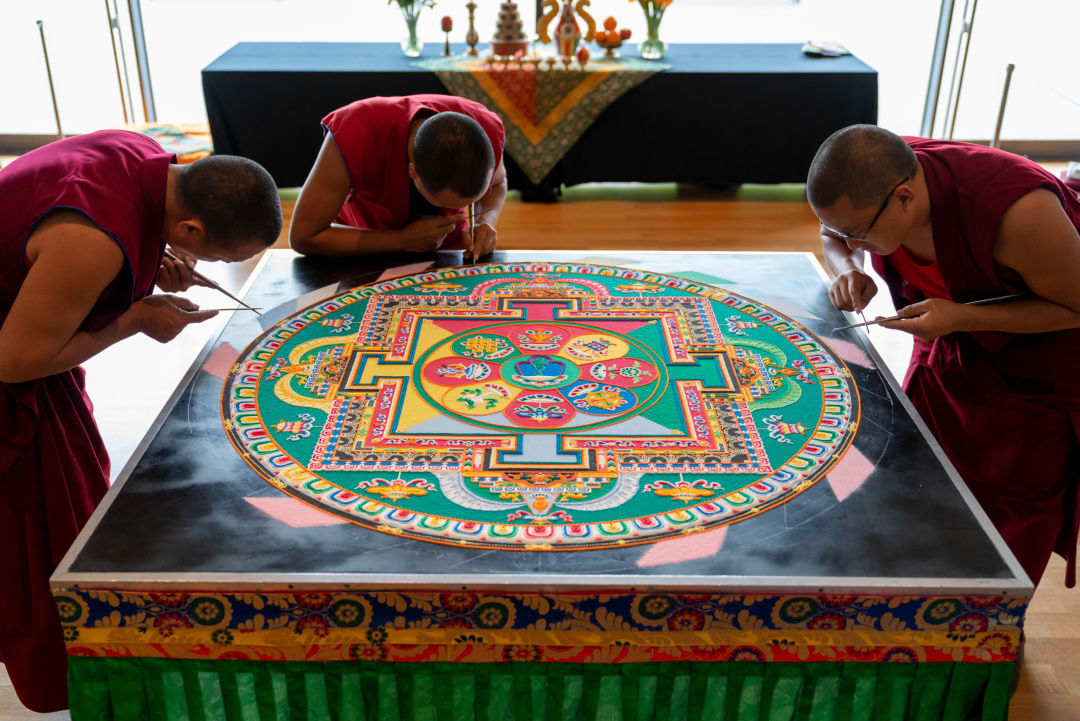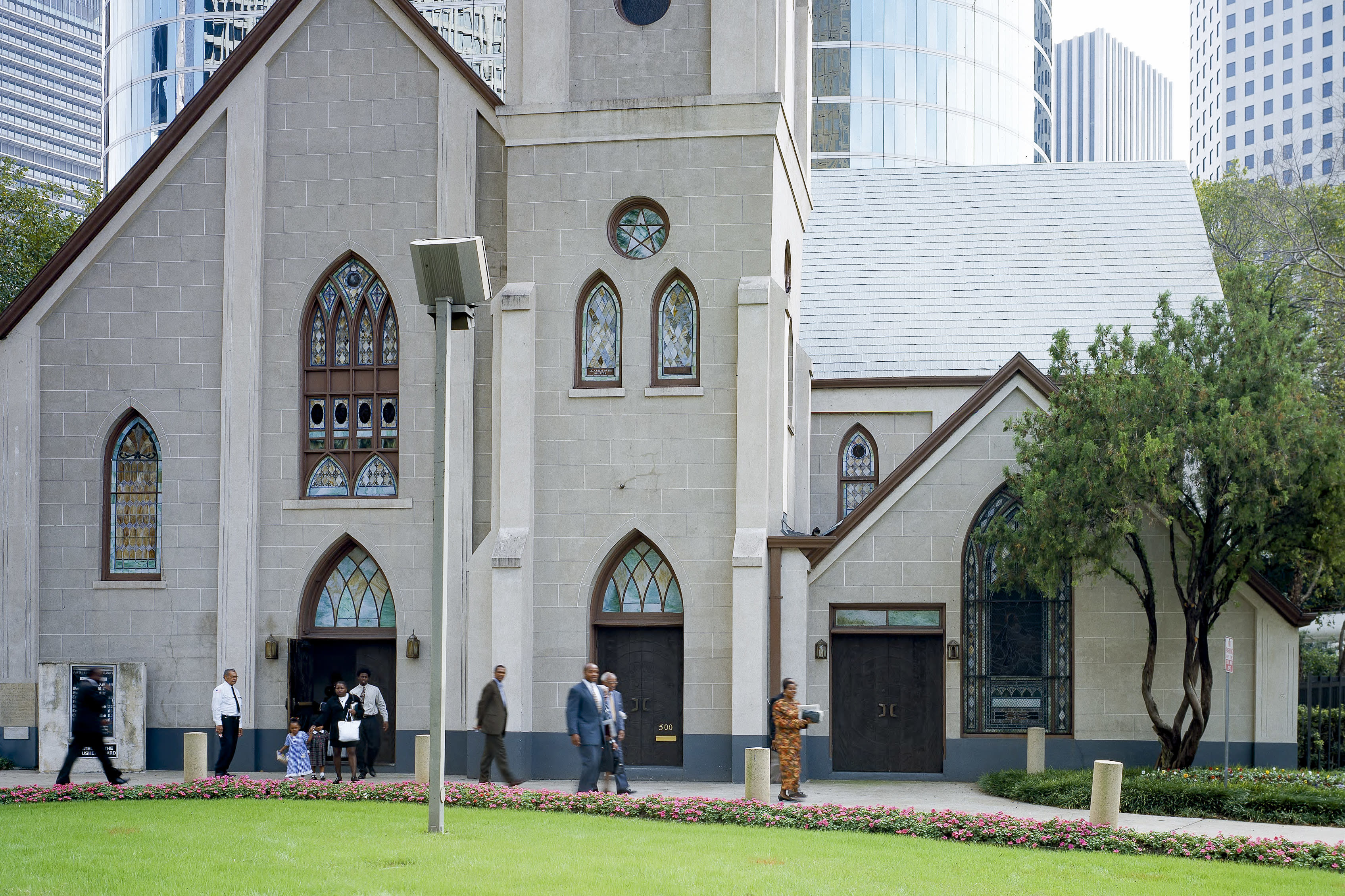Buddhist Monks, Sand Paintings, and the Ephemerality of Now

Tibetan monks at work on a mandala sand painting.
mandala sand painting is a process in meditation, and for the fifth year in a row, Tibetan Buddhist monks from the Drepung Loseling Monastery in southern India will take up residency at Asia Society Texas as they painstakingly create art out of millions of grains of colored sand.
The process is part and parcel of the monks' meditative practices. When they begin the mandala, the monks consecrate the site through chanting, music, and mantra recitation. They draw an outline of the mandala symbol on a wooden platform, and over five days, they lay the colored sands using a traditional metal funnel called a chakpur. What becomes of the finished product? Well, the mandala is ritualistically brushed away—a symbol of ephemerality in an impermanent world.
“Our audiences seem to enjoy the watching the creation of the mandala because it’s a special chance to connect to culture directly,” says Bridget Bray, director of exhibitions at Asia Society Texas. “Being in the space with the monks as they work really gives you as a viewer a great idea of what a special practice such as this one looks like and sounds like. The monks’ precise techniques are so impressive in person, it makes a big impact on those lucky enough to be a part of it.”
Bray also says one of the best parts is watching how the mandala develops over the course of hours and days. If you can't watch in person, be sure to follow along via the livestream found on the Asia Society website.
In addition to the mandala creation, the monks will also present two performances of Sacred Music Sacred Dance for World Healing, which draws from Tibetan temple traditions and features music, dance, and ornate costumes.
“Originally, these were ceremonies that an entire village would take part in, but the performances here are guided,” says Stephanie Todd Wong, director of arts and culture at Asia Society Texas. “The Geshe [the spokesperson monk] will explain between each piece the significance of each ceremony, so the audience will get a taste of what the community would have experienced in an earlier time, even down to the highly colorful, ornate regalia worn by the monks. There’s dancing, singing, instrumental performances, and even a spirited debate between the monks, just like they would have debated topics in the actual monastery.”
A family performance includes a snow lion dance and lasts about 45 minutes. The longer performance, in the evening, runs about 90 minutes, and includes eight pieces.
“What they do is ephemeral: It only exists in the moment,” says Wong. “In the case of the mandala, it’s live art that’s being created right before you, and once it’s complete, the mandala is destroyed. The sand is gathered up and returned to nature. The mandala is ephemeral, as are their performances, and all performances—it’s precious because it only exists for that moment in time.”
August 14–18. Visitors can observe the mandala sand painting for free at Asia Society Texas, 1370 Southmore Blvd. More info at asiasociety.org/texas.




